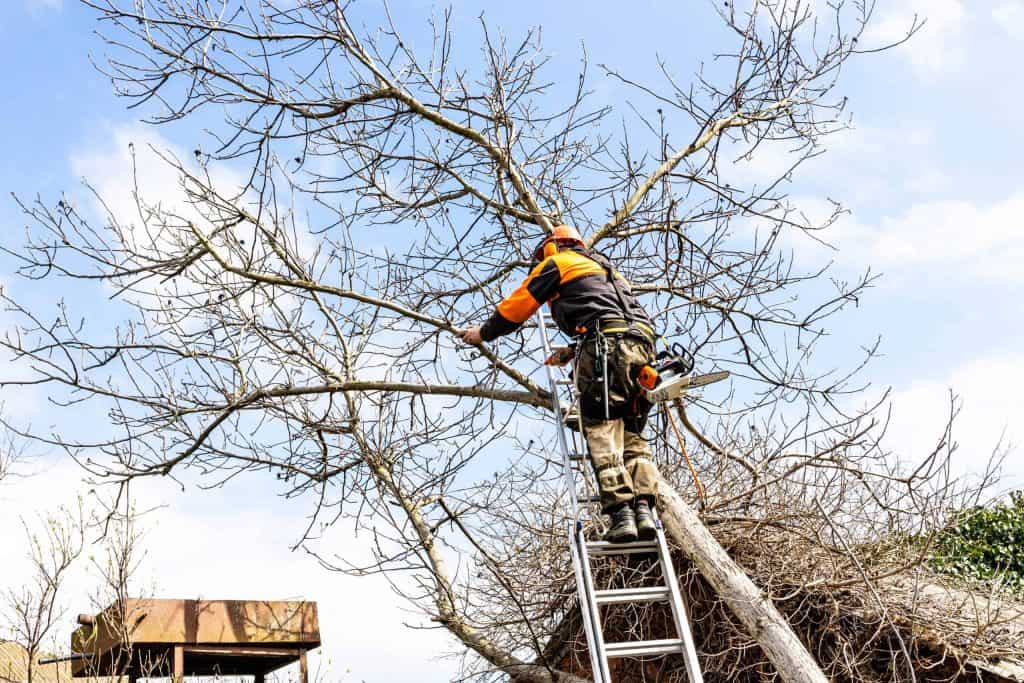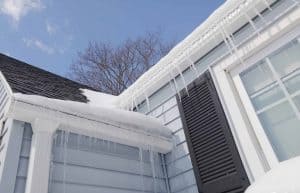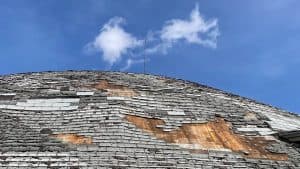Spring has finally arrived in Calgary, bringing warmer temperatures. As you start your annual spring-cleaning, it’s a good time to also think about your roof and prepare it for the summer.
Summer storms can bring much-needed relief from the heat, but they can also wreak havoc on your roof if it’s not thoroughly prepared. A leaking roof can lead to costly repairs and put your home at risk for further damage. That’s why it’s essential to take steps to prepare your roof for the upcoming summer storm season in Calgary. At Whalley’s Four Seasons Roofing, we are a residential roofing company that has seen the damage that can be caused when problems go unnoticed or when subpar products and installations are applied. Here are 5 steps to help you prepare for Calgary’s summer storms.

4 Essential Steps to Protect Your Roof from Summer Storms in Calgary
Taking the necessary precautions to prepare your roof for Calgary’s summer storms is crucial for maintaining its integrity and ensuring the safety of your home. By following these five essential steps, you can minimize the risk of damage and protect your investment from the unpredictable elements.
1. Understand What Severe Weather Conditions to Expect in Calgary.
When preparing your home for summer storms, you need to consider the environment and what storms would occur most often in Calgary’s climate. We are known to have a unique climate and geography due to our proximity to the Rocky Mountains and the Canadian prairies, which leads to dramatic and occasionally severe weather. So, the first step is knowing what weather to prepare for, especially if you’re new to the region or if you just need a refresher.

- Thunderstorms: The heavy rainfall during thunderstorms can lead to water infiltration and leaks, potentially causing damage to the roof structure, insulation, and interior of the building. Additionally, strong winds associated with thunderstorms can lift or remove shingles, leaving the roof vulnerable to further damage. These storms often happen in Calgary, with news warnings about thunderstorms happening frequently over the summer months.
- Hailstorms: Hailstorms can cause significant damage to roofs, as hailstones can dent or puncture roofing materials, including asphalt shingles, metal, and tile. This can lead to water infiltration, reduced lifespan of the roofing material, and the need for repairs or replacement. That’s why investing in more durable roofing materials, such as Euroshield rubber roofing, saves you money in the long term due to the frequency and cost that hail can inflict on your home.
Windstorms: Powerful windstorms can cause shingles or other roofing materials to lift, break, or become dislodged, leaving the roof exposed to water damage and potential structural issues. In extreme cases, windstorms can even cause the entire roof to be torn off or collapse. Calgary is located in an area that is one of the windiest regions in Canada. - Floods: While roofs are primarily designed to withstand rainfall, floods can still have indirect effects on a roof. Overflowing gutters and downspouts due to heavy rainfall can lead to water pooling around the foundation of a building, potentially causing damage to the roof structure over time. Additionally, if a building is located in a low-lying area, rising floodwaters can cause water to back up through roof drains or vents, leading to interior damage. Calgarian who were here in the 2013 Alberta Floods know this all too well.
After gaining an understanding of the severe weather conditions that are common in Calgary, you can better equip your home to withstand the challenges these storms present. One crucial aspect of preparing for the summer storm season is to address any potential hazards around your property. This leads us to the second step: trimming the trees around your home. Overgrown and overhanging tree branches can pose several risks to your roof, especially during stormy weather, and taking proper action can help prevent potential damage.

2. Trim The Trees!
Perhaps trimming trees is already on your to-do list, and if that’s the case, then great! But if it’s not, it’s time to consider adding it to your list of essential tasks in preparing your home for summer storms. Overgrown and overhanging tree branches can pose numerous risks to your home, especially during stormy weather.
- Prevent Damage to Your Roof: Overhanging branches can break and fall onto your roof during high winds or storms, potentially causing significant harm. By regularly trimming branches close to your home, you can reduce the risk of damage and maintain the integrity of your roof.
- Avoid Debris Build-up: Leaves and other debris from trees can accumulate on your roof and in your gutters, leading to water damage or clogging issues. Regular tree maintenance can help minimize debris build-up and save you time and effort in cleaning your roof and gutters that we go over in the next section.
- Protect Your Home’s Exterior: Trimming trees around your home can also help protect your home’s exterior, such as siding and windows, from potential damage caused by falling branches or wind-driven debris during storms.
- Enhance Visibility: Well-maintained trees can also improve visibility around your property, which can be crucial during severe weather conditions. Clear sight lines can help you spot potential hazards early and take the necessary precautions to protect your home.
- Promote Tree Health: Regular tree trimming not only benefits your home, but also promotes the health and longevity of the trees themselves. By removing dead or damaged branches, you can help prevent disease and pests from harming your trees, ensuring they continue to provide shade and beauty to your property.
We went over this quickly, but always consider hiring a professional arborist, as they can help prepare your trees for summer storms or remove large trees when needed.

3. Check Your Gutters and Downspouts
Heavy rain can often occur suddenly, putting a lot of strain on your rainwater drainage system. Pooling water backing up on your roof or not draining away from your foundation can cause trouble. A simple solution you can do is to use your hose to clean off debris and help clear your gutters, as well as identify problem areas. This is especially important if you had winter roofing issues or if you didn’t clean your gutters last fall.
- Before using a hose to wash off any remaining debris, it’s a good idea to remove larger pieces of debris manually. Use a long-handled broom or roof rake to gently dislodge leaves, branches, and other debris from your roof, taking care not to damage the shingles. Remove debris from gutters using a gutter scoop, trowel, or manually (wearing gloves), and dispose of it properly.\
- Use a gentle spray setting: Avoid using a high-pressure setting, as it can potentially damage your shingles or force water underneath them. Instead, opt for a gentle spray to loosen and wash away debris.
- Work from the top down: When cleaning your roof, start at the peak and work your way down to avoid forcing water under the shingles. This also helps to direct the debris towards the gutters. Clean gutters carefully: When using a hose to clean your gutters, ensure that the water pressure is not too high, as it can damage your gutters or cause them to become detached from your home. Use a gutter-cleaning attachment, if available, or carefully direct the water flow to wash away debris.
- Be cautious on a ladder: If you need to use a ladder to access your roof or gutters, ensure that it is properly secured and that you follow all safety precautions. If you’re uncomfortable working at heights or unsure about your ability to clean your roof and gutters safely, consider hiring a professional to handle the task.
4. Schedule a Roof Inspection
Honesty is vital, and we strongly recommend enlisting a professional roofer to conduct an inspection. We’ve witnessed how minor issues can be overlooked or missed by an untrained eye, leading to expensive repairs later on. We recognize that some homeowners might successfully perform their inspection and identify potential problems. However, our data could be biased, as we don’t always learn about these successful cases.
Ultimately, whether you decide to hire a professional or conduct the inspection yourself, it’s crucial to plan and set aside time for this task. The top priority is to ensure your roof is thoroughly inspected and ready for summer storms. By taking the time to read this far, you’re already ahead of your peers in preparing your home for the upcoming storm season. Don’t hesitate to contact us to begin the process.


